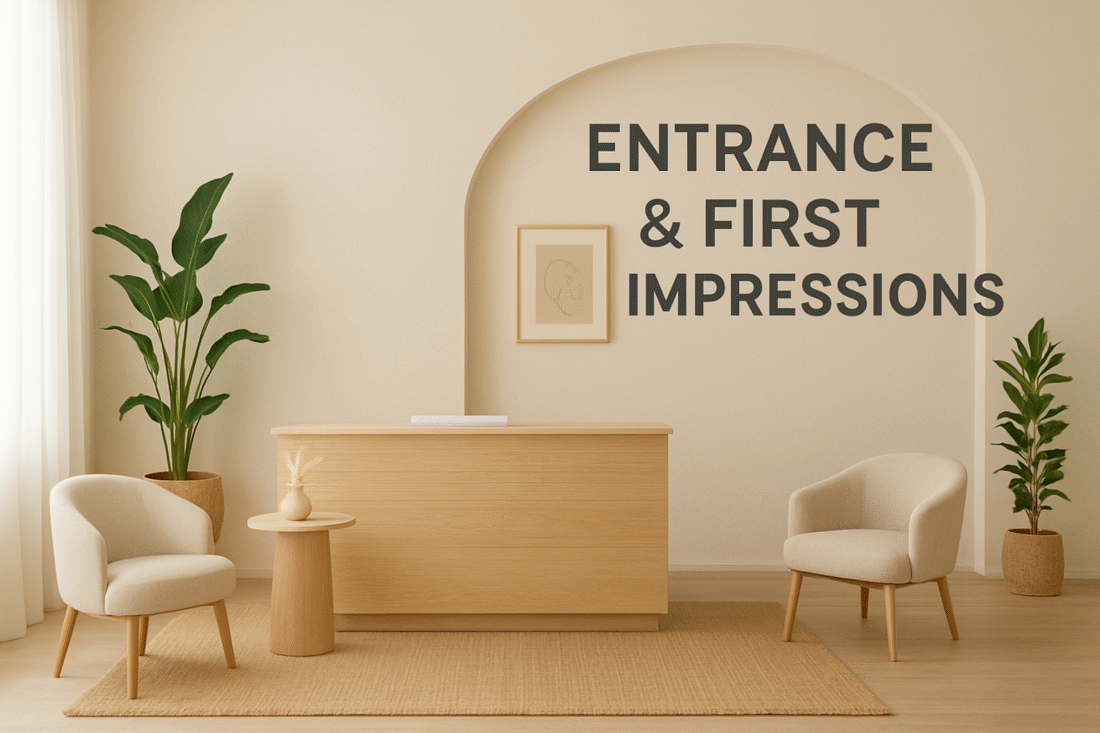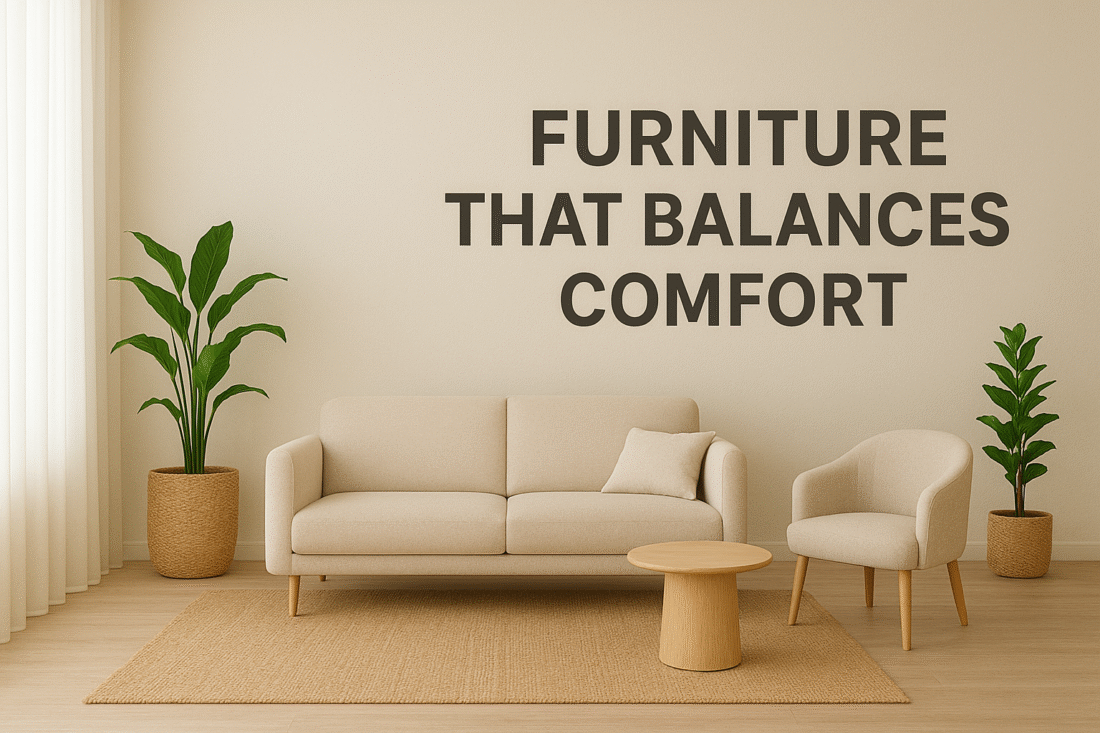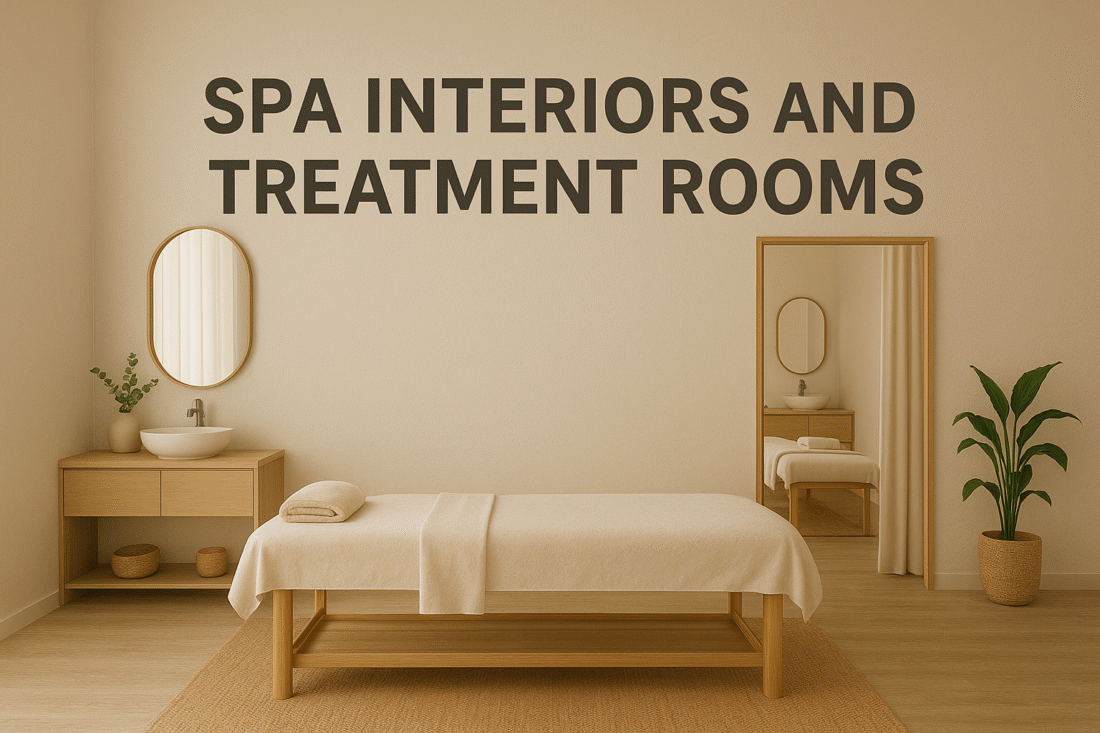Wellness centers are no longer just treatment facilities; they are immersive sanctuaries for physical, emotional, and spiritual well-being. Successful renovations must focus on safety, compliance, and design that nurtures the human experience. From spa interiors to modern holistic healing design, and innovative well
Wellness Center Designing & Renovation
Optimized Wellness Space
Wellness centers thrive on well-planned layouts that support the flow of treatments and relaxation. Designing functional zones ensures every guest has a holistic journey.
- Treatment Areas: Massage rooms, saunas, and hydrotherapy sections.
- Relaxation Zones: Lounges and quiet corners for downtime.
- Environmental Comfort: Sound, lighting, and climate control designed for tranquility.
Pro Tip: Keep treatment rooms separate from social areas to maintain privacy and calm.
Entrance And First Impressions
The entrance is where the healing journey begins. A welcoming and tranquil reception immediately sets the tone for relaxation.
- Natural Materials: Wooden counters, stone walls, and bamboo finishes.
- Calming Décor: Plants, water features, and minimal artwork.
- Ambience: Soft lighting and natural aromas to create serenity.
Pro Tip: Use flowing water features in the entrance to evoke peace and renewal.
Lobby And Ambience
A wellness center lobby should instantly transport guests away from daily stress.
- Open Layouts: Spacious seating areas with uncluttered design.
- Soft Textures: Linen upholstery, woven rugs, and natural fabrics.
- Lighting: Warm tones that create an intimate yet luxurious feel.
Pro Tip: Add biophilic elements such as indoor gardens to enhance calm and connection to nature
Colors For Healing Spaces
Color psychology plays a vital role in relaxation and healing. Renovations today focus on palettes that soothe and inspire.
- Earthy Neutrals: Beige, taupe, and sand tones for grounding.
- Greens & Blues: Symbolize growth, balance, and tranquility.
- Warm Accents: Muted terracotta or soft peach for subtle energy.
Pro Tip: Use calming base colors with gentle accent hues to avoid overstimulation.
Furniture That Balances Comfort and Aesthetics
Furniture should feel natural and inviting while supporting comfort during treatments and relaxation.
- Natural Materials: Rattan, bamboo, and reclaimed wood.
- Comfortable Seating: Plush sofas, floor cushions, and lounge chairs.
- Minimalist Style: Functional yet elegant designs.
Pro Tip: Select modular furniture that can be easily moved for workshops, yoga, or group therapy.
Spa Interiors And Treatment Rooms
Spas are the heart of wellness centers, requiring thoughtful design for relaxation and rejuvenation.
- Natural Aesthetics: Stone baths, wooden accents, organic linens.
- Soothing Ambience: Aromatherapy diffusers, candles, and water sounds.
- Indoor-Outdoor Concepts: Open-air treatment rooms for a natural experience.
Pro Tip: Incorporate dimmable lighting in spa interiors to adapt the mood for different treatments.
Meditation and Yoga Zones
Dedicated spaces for meditation and movement are central to holistic healing design.
- Minimalist Layouts: Uncluttered, open floors for peace of mind.
- Textures & Décor: Cushions, woven mats, and subtle art.
- Connection to Nature: Large windows or garden-side yoga decks.
Pro Tip: Position meditation zones near natural light sources to enhance mindfulness practices.
Lighting, Acoustics, And Air Quality
Environmental elements directly influence wellness and relaxation.
- Lighting: Use natural light where possible; supplement with warm LEDs.
- Acoustics: Soundproofing to block external noise, plus soft background music.
- Air Quality: Purification systems and indoor plants for freshness.
Pro Tip: Combine circadian lighting with aromatherapy for a fully immersive healing environment.
Aesthetics That Inspire Healing
A wellness center’s design should feel like an escape from daily life.
- Textures: Organic fabrics, natural stone, and wood.
- Decor: Minimal art, mandalas, or cultural pieces for authenticity.
- Ambience: Natural scents and calming sounds.
Pro Tip: Keep décor minimal—every element should add purpose, not clutter.
Wellness Center Renovation Trends
Renovations are evolving to meet the growing demand for sustainable and holistic spaces.
- Eco-Friendly Materials: Recycled flooring, toxin-free paints, and solar-powered systems.
- Holistic Healing Design: Spaces for meditation, Ayurveda, and energy therapies.
- Luxury Wellness: Combining indulgence with mindfulness, from hydrotherapy pools to wellness cafés.
Pro Tip: Invest in flexible spaces so centers can evolve with future wellness trends.







